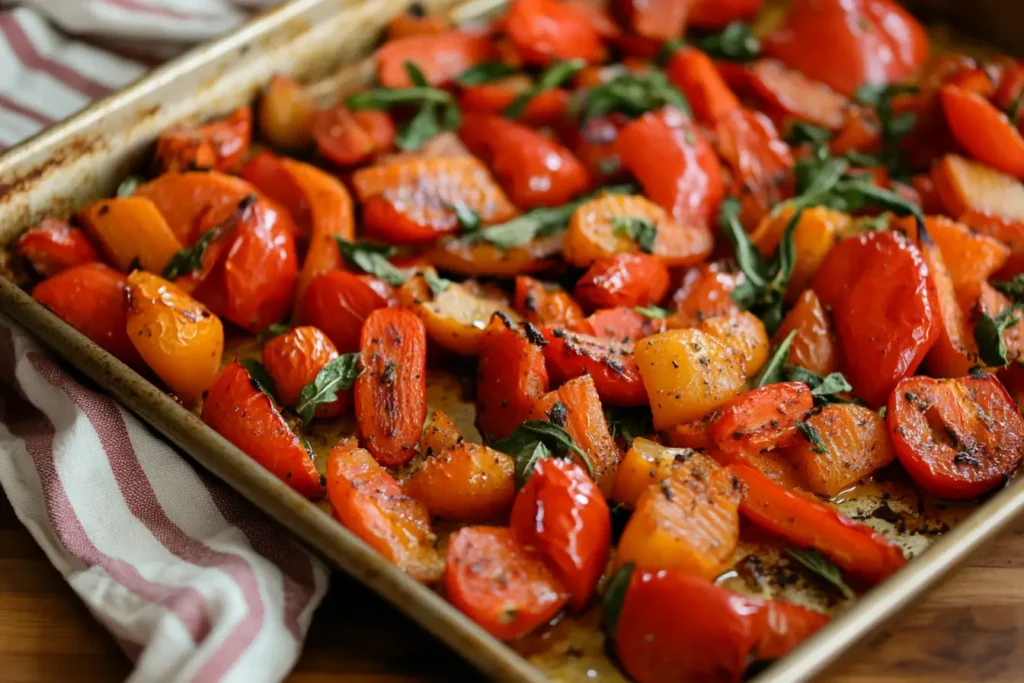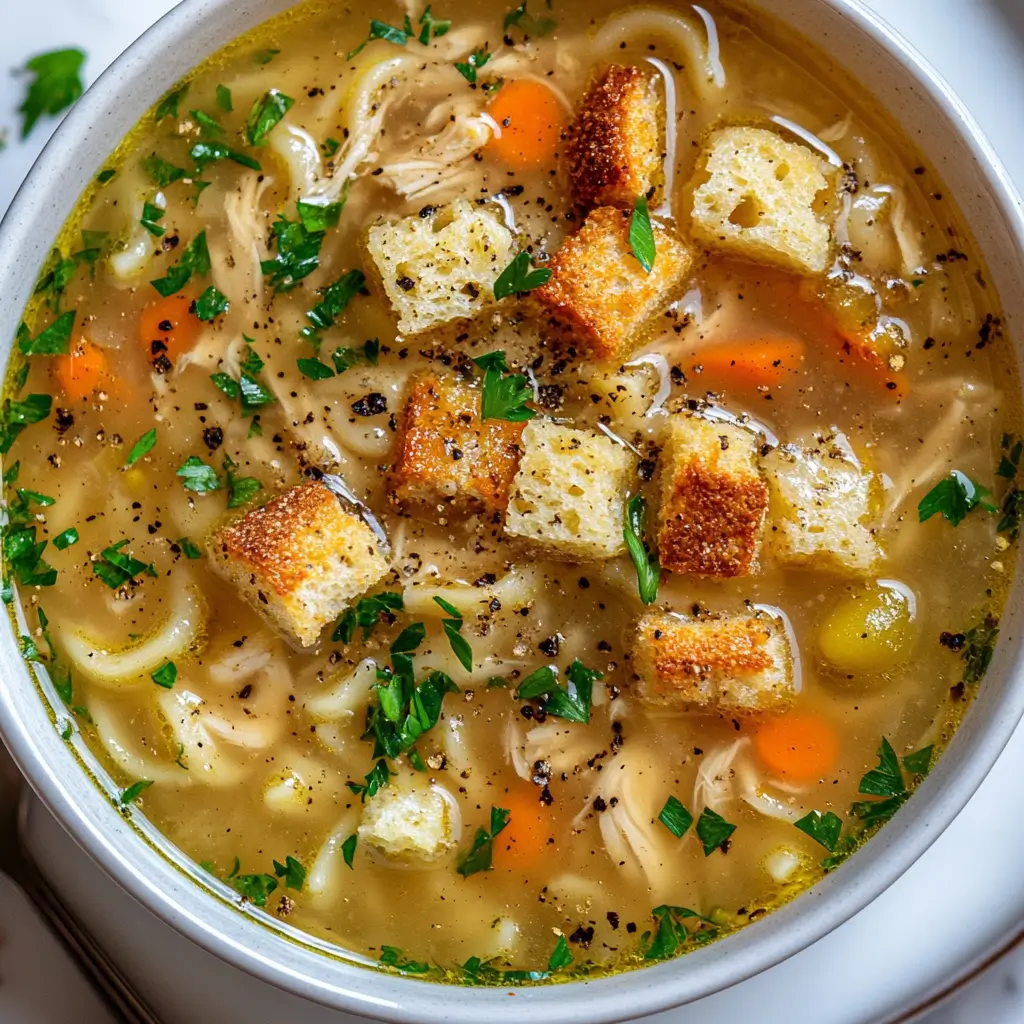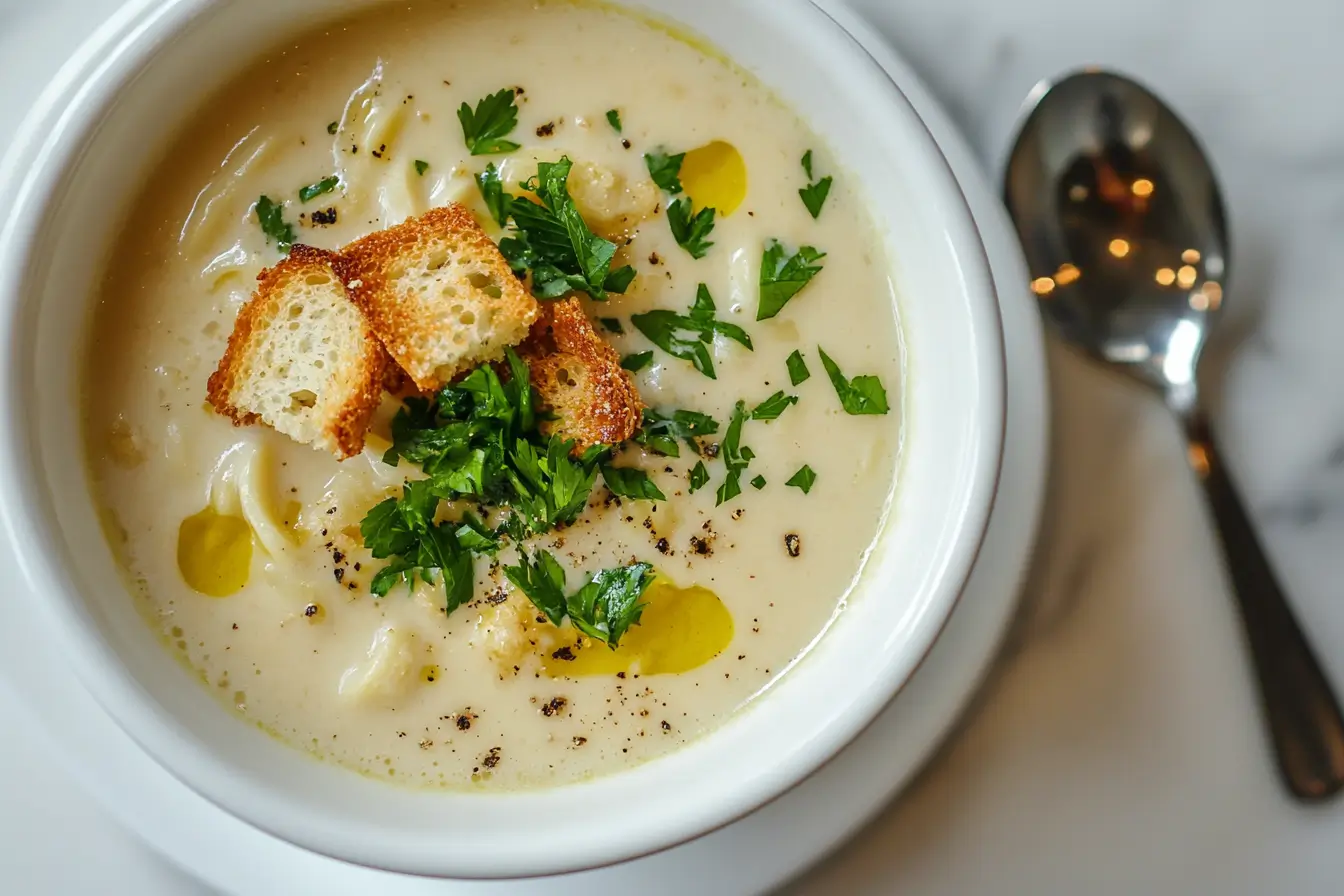Soup can be comforting, but bland soup can ruin the experience. If you’re wondering how to jazz up bland soup, you’re in the right place! Learning how to jazz up bland soup is easier than you think, with tips that range from seasoning ideas to texture improvements. By the time you finish this guide, you’ll know exactly how to jazz up bland soup and impress anyone at the dinner table.
Soup is incredibly versatile, making it the perfect dish for customization. A few adjustments can completely change the flavor profile, allowing you to create soups that suit any palate. By the end of this guide, you’ll feel confident in your ability to turn even the blandest soups into something delicious.
Why Is My Soup Bland and How to Jazz It Up?
Before we dive into solutions, let’s discuss why soups can turn out bland. Understanding the root cause is key to fixing the problem effectively. One common issue is underseasoning. Without enough salt or other flavor enhancers, soups can lack depth. Another culprit is starting with a weak base. If your broth is watery or flavorless, the final result will reflect that. Additionally, some soups lack balance, meaning they are missing the interplay between salty, sweet, sour, and umami flavors that make a dish truly satisfying.
Building flavor as you cook is essential. Each step, from sautéing aromatics to adding garnishes, contributes to the final taste. If you’re curious about more foundational soup tips, check out our guide to Actually Good Homemade Vegetable Soup Flavor Tips, which provides more details about making soups from scratch.
Start with Aromatics to Improve Bland Soup Flavor
When learning how to jazz up bland soup, the first step is focusing on aromatics. Aromatics like onions, garlic, leeks, and celery form the base of many soup recipes. Sautéing them in oil or butter until they’re soft and fragrant creates a flavorful foundation that sets the tone for the entire dish. Adding spices like cumin, coriander, or smoked paprika at this stage enhances the aromatics and deepens the flavor.
To elevate your soup, consider incorporating tomato paste, which adds a hint of acidity and umami. Bacon or pancetta can also contribute a smoky richness. For example, if you’re making a lentil soup, frying diced onions and garlic with a spoonful of tomato paste can dramatically enhance the flavor. By focusing on this foundational step, you’ll already be on your way to fixing bland soup issues.
Roast Your Veggies for a Soup Flavor Boost

If you’ve ever wondered why roasted vegetables taste so good, it’s because roasting caramelizes their natural sugars. This process intensifies their flavors, making them a great addition to soups. Roasting vegetables is an excellent way to add depth to your soup, especially if you’re working with a limited ingredient list.
For instance, roasting carrots, parsnips, and sweet potatoes can make a simple vegetable soup taste incredible. Place them on a baking sheet, drizzle with olive oil, sprinkle with salt and pepper, and roast at 400°F (200°C) until they’re golden and tender. Once roasted, blend them into your soup for a rich, velvety texture or leave them as chunky additions. This method is particularly effective for tomato-based soups. Try roasting canned tomatoes with a drizzle of olive oil before blending them into your broth. It’s an easy way to make any tomato soup taste more vibrant.
Use Quality Stock: The Foundation of Fixing Bland Soup
A flavorful stock is the backbone of any good soup. If your stock lacks flavor, your soup will too. Homemade stock is ideal because it allows you to control the ingredients and create a rich, complex base. However, if you’re short on time, store-bought options can work as long as you enhance them.
To boost the flavor of store-bought stock, simmer it with a Parmesan rind, fresh herbs, or a splash of soy sauce. Adding vegetables like onions, celery, and carrots can also make a significant difference. For a heartier base, use bones to create a stock that’s packed with nutrients and flavor.
Using a flavorful broth is one of the easiest ways to address the issue of bland soup. For more ideas, our post on No-Soak Black Bean Soup dives deeper into enhancing soup bases for maximum flavor.
Amp Up Your Seasonings: Tips for Better-Tasting Soup
Seasoning is one of the most important elements of soup-making, yet it’s often overlooked. If you’re struggling with fixing bland soup, reassess your approach to seasoning. Salt is essential for bringing out the natural flavors of your ingredients. If your soup tastes flat, add a pinch of salt and taste again.
In addition to salt, acids like vinegar or lemon juice can brighten your soup and balance richer flavors. Spices like turmeric, curry powder, or cayenne pepper can add warmth and complexity, while fresh herbs like basil, parsley, and cilantro provide a burst of freshness. Bay leaves are another great addition, offering a subtle earthy note when simmered in your soup.
Don’t forget to add seasoning at every stage of cooking. By seasoning gradually, you’ll avoid over-salting while ensuring each layer of flavor is fully developed. Learn more about seasoning in our guide to What is the Secret Ingredient in Soup?.
Add Creamy or Cheesy Elements to Make Soup Delicious

Creamy soups are universally loved, and adding a touch of creaminess can elevate almost any recipe. For dairy-based soups, options like heavy cream, half-and-half, or milk can create a velvety texture. If you’re making a vegan soup, coconut milk or blended cashews work beautifully.
One of the best-kept secrets in soup-making is using cheese rinds, particularly Parmesan. Simply drop the rind into your soup as it simmers, and it will release its nutty, savory flavors. Be sure to remove the rind before serving. Adding a dollop of sour cream or Greek yogurt just before serving can also enhance the overall taste and texture.
For more tips on creating creamy textures, check out our article on How to Make Soup Thick and Creamy, which shares even more tricks for perfecting creamy soups.
Layer in Extra Ingredients to Jazz Up Bland Soup
Adding unexpected ingredients can transform a plain soup into something extraordinary. For example, citrus zest or juice can add a zesty kick, while nut butter like peanut or almond butter brings richness and depth. Stock cubes can also come to the rescue if your soup lacks flavor; simply dissolve one in your broth and taste the difference.
Pesto is another fantastic addition. Stirring a spoonful of basil pesto into vegetable or minestrone soup creates a burst of fresh, herby flavor. Experimenting with new ingredients is one of the easiest ways to jazz up bland soup, so don’t hesitate to get creative.
If you want more inspiration for adventurous soup additions, explore our recipe for Easy Swamp Soup, which highlights bold flavors and unique combinations.
Texture Tricks for Achieving Perfect Soup Consistency
The texture of your soup can be just as important as its flavor. If your soup feels too thin or lacks body, there are several ways to fix it. Blending part of the soup can create a creamy base without the need for added cream. Alternatively, adding grains like quinoa, barley, or rice can make the soup heartier.
For a textural contrast, try topping your soup with croutons, toasted nuts, or crispy bacon. These crunchy elements not only enhance the texture but also add flavor. Whether you prefer silky purees or chunky broths, adjusting the texture can make a significant difference in the overall experience.
Finishing Touches: Simple Ideas to Revitalize Bland Soup
Sometimes, the final touch is all you need to turn a bland soup into something spectacular. Toppings and garnishes can make your soup look as good as it tastes. Popular options include shredded cheese, a drizzle of olive oil, or a swirl of yogurt.
Adding fresh herbs like chives, dill, or parsley as a garnish can brighten the flavors and add a pop of color. Warm your bowls before serving to keep the soup hot and inviting. Little details like these can take your soup presentation to the next level.

Common Mistakes and Fixes
Even experienced cooks make mistakes, but the good news is that most soup issues are easy to fix. If your soup is oversalted, try adding a raw potato to absorb some of the salt. You can also dilute the soup with unsalted broth or water.
If your soup is too thin, thicken it with cornstarch, flour, or blended vegetables. These quick fixes ensure that your soup is both flavorful and satisfying. For more troubleshooting tips, see our guide to Ham Bone and Vegetable Soup: A Hearty Nourishing Classic.
Cultural Inspiration
Different cuisines offer endless ideas for jazzing up soup. Asian-inspired soups often feature ingredients like soy sauce, ginger, and sesame oil. Mediterranean flavors rely on olives, oregano, and lemon for brightness. Mexican soups, on the other hand, use lime, chili powder, and fresh cilantro for bold, zesty flavors.
Exploring international flavor profiles is a fun way to learn how to jazz up bland soup while broadening your culinary horizons.
Reviving Leftover Soups
Leftovers don’t have to be boring. Adding fresh ingredients like chopped herbs or a splash of cream can make reheated soup taste as good as new. When reheating, do so gently over low heat to preserve the flavors and texture.
For even more creative ideas on using leftovers, check out our recipe for Vegan Soup Dumplings, which showcases how versatile soup can be.
Conclusion
Learning how to jazz up bland soup is all about experimenting with flavors and textures. By focusing on foundational techniques, such as seasoning properly, adding aromatics, and layering ingredients, you can transform even the most boring soups into dishes you’re proud to serve. Don’t be afraid to try new ingredients, and always remember to taste as you go. With these tips, you’ll never have to settle for bland soup again.
FAQs
How to Make a Bland Soup Taste Better?
Making a bland soup taste better starts with adding layers of flavor. Start by seasoning the soup properly with salt, pepper, and a splash of acid like lemon juice or vinegar. Incorporate aromatics such as garlic, onions, or shallots to build a flavorful base. Adding herbs like thyme, parsley, or cilantro can freshen up the dish. Don’t forget umami-rich ingredients like soy sauce, Parmesan rinds, or tomato paste, which can give your soup a deeper and more robust taste.
What Can I Add to Boring Soup?
To transform a boring soup, consider adding bold and fresh ingredients:
- Spices: Cumin, turmeric, or smoked paprika for warmth.
- Herbs: Fresh basil, parsley, or chives for brightness.
- Acid: Lemon juice, lime juice, or balsamic vinegar to add a tangy kick.
- Dairy: A swirl of cream, yogurt, or coconut milk for richness.
- Toppings: Croutons, grated cheese, or a dollop of pesto for extra flair.
Even something as simple as freshly cracked black pepper or a drizzle of olive oil can make a big difference.
What Adds Depth of Flavor to Soup?
Depth of flavor in soup comes from layering ingredients and cooking techniques:
- Sauté Aromatics: Onions, garlic, and celery are classic options to start with.
- Roast Vegetables: Caramelized veggies intensify the flavor.
- Use Broth Instead of Water: Homemade or store-bought stock adds richness.
- Umami Ingredients: Add soy sauce, miso, Worcestershire sauce, or cheese rinds.
- Spices and Herbs: Incorporate bay leaves, thyme, or rosemary during simmering.
These additions will give your soup a complex, satisfying flavor profile.
How to Fix Bland Watery Soup?
Fixing bland watery soup involves enhancing both flavor and texture:
- Thicken It: Blend part of the soup or add potatoes, beans, or lentils for a heartier consistency.
- Enhance Flavor: Season with salt, pepper, and spices. Add acids like lemon juice or vinegar for brightness.
- Add Ingredients: Incorporate protein (shredded chicken, beans) or starches (rice, pasta) to make it more robust.
- Finish Strong: Garnish with fresh herbs, a swirl of cream, or a drizzle of flavored oil.
By making these changes, you can transform a watery soup into a delicious and satisfying dish.

